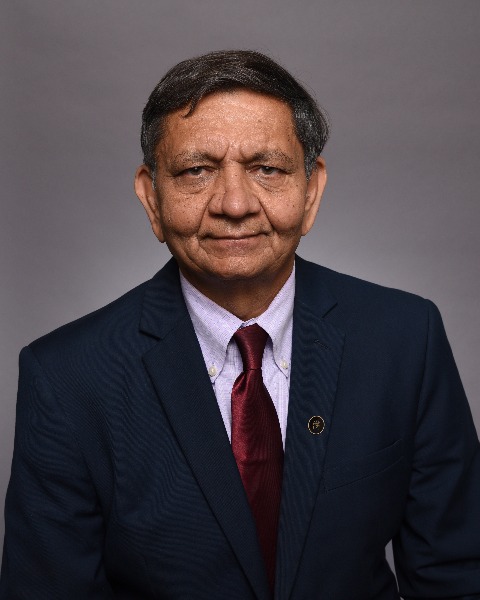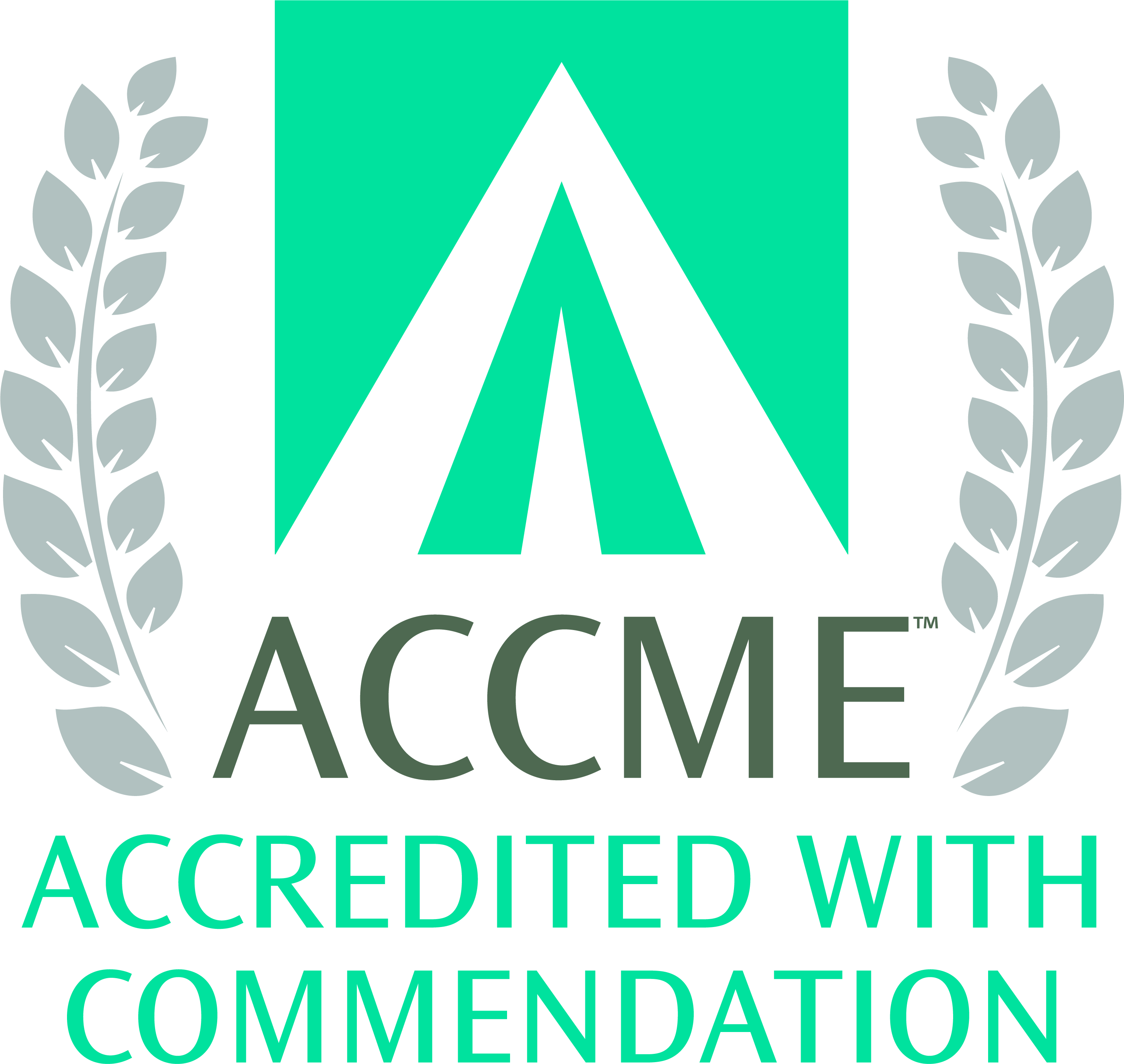
-
Register
- Non-Member - $39
- Regular Member - $29
- Retired - $29
- Early Career Physician - $29
- Resident - $19
- Student - $19
- Associate - $19
- ASAM Staff - Free!
- International Member - $29
- Emeritus Member - $29
- Provisional Member - $29
- Fellow Member - $29
- Honorary Member - $29
- CRT Member - $29

Stimulants and Synthetic Drugs
Recorded: Thursday, September 29, 2022 - Saturday, October 1, 2022
On-Demand Session
Overview
This 1-hour, 45-minute, on-demand session from the 2022 ASAM State of the Art Course highlights the latest research and emerging topics on stimulants and synthetic drugs, including the stimulant and fentanyl overdose mortality epidemic, synthetic stimulants and opioids, psychophysiological phenotyping of reward processing, and promising treatment approaches for Methamphetamine Use Disorder.
According to the CDC, from 2012 through 2020 in the United States, the number of deaths involving methamphetamine increased more than 6-fold while the number of deaths involving cocaine more than tripled. These numbers have continued to rise since the beginning of the COVID-19 pandemic. Presentations in This 1-hour, 45-minute, on-demand session from the 2022 ASAM State of the Art Course highlights the latest research and emerging topics on stimulants and synthetic drugs, including the stimulant and fentanyl overdose mortality epidemic, synthetic stimulants and opioids, psychophysiological phenotyping of reward processing, and promising treatment approaches for Methamphetamine Use Disorder. Following each presentation, presenters answer audience questions.
This session is comprised of 4 presentations that deep dive into different aspects of the overall topic.
- Colluding Crises: Understanding Stimulant and Fentanyl Overdose Mortality
As fentanyl overdose mortality has climbed precipitously across the United States, rising deaths due to stimulant (cocaine or methamphetamine) toxicity have followed. The interaction between these two crises runs deep and is poorly understood, with a very limited understanding of the causes of death from acute stimulant toxicity, an unclear relationship between stimulant and fentanyl use, and uncertain interactions resulting in overdose death. We will review the trends in overdose death due to stimulants, fentanyl, and the two in combination; the clinical presentation of acute toxicity from stimulants and fentanyl; and existing data elucidating the co-use and toxicity from these drugs. Finally, we will address potential interventions to address the related overdose crisis. - Psychophysioloigcal phenotyping of reward processing and its modulation with abstinence in cocaine addiction
The goal of the presentation is to discuss motivational dysregulation, or deficits in reward processing, in substance use disorders and to discuss how these processes change during abstinence. Different aspects of reward processing (e.g., drug-related and non-drug-related) will be defined. Electroencephalography (EEG) technique will be introduced that can be used to objectively assess motivational dysregulation in substance use disorder. To make the case for clinical relevance and significance of this topic, several studies from the presenter's and other research groups on this topic will be presented. The presentation will conclude with a discussion on other brain imaging techniques for studying motivational dysregulation and how such work provides bases for the development of treatments and interventions for substance use disorders. - Pharmacology of New Synthetic Stimulants and Opioids Appearing in Clandestine Drug Markets
New psychoactive substances (NPS) are synthetic drugs specifically engineered to bypass current drug control laws. This presentation will provide up-to-date information about the stimulant and opioid NPS that are emerging in clandestine drug markets in the US and elsewhere. The chemical structures, molecular mechanisms of drug action, and preclinical pharmacology for representative stimulant (e.g., eutylone) and opioid (e.g., isotonitazene) NPS will be presented. Clinical symptomatology produced by the drugs will be described. The information provided will be utilized to assess harms, and guide strategies for management and treatment. - Treatment of Methamphetamine Use Disorder Using Injectable Naltrexone and Oral Bupropion
Methamphetamine use continues to increase and has now been characterized as the ?fourth wave? of the opioid epidemic. Furthermore, the majority of overdose deaths now involve stimulants. Despite the acknowledgement of this public health crisis, there are no FDA approved treatments for methamphetamine use disorder. This presentation will address this urgency by reviewing outcomes from a recent novel clinical trial which evaluates the efficacy and safety of the combination of extended-release oral bupropion and extended-release injectable naltrexone for the treatment of methamphetamine use disorder.
These sessions are intended for experienced learners and are taught an intermediate or advanced level. The target audience includes:
- Addiction medicine specialists who are interested in the latest research in the field and its translation to clinical practice
- Physicians and other healthcare professionals who treat patients with addiction and seek an advanced level of knowledge
- Scientists, researchers, public health officials and advocates dedicated to the field of addiction medicine
This conference addresses all 6 ACGME Competencies.
Learning Objectives
At the end of the course, learners should be able to:
- Discuss the important, new, scientific breakthroughs in the prevention, diagnosis, and treatment of addiction.
- Critically evaluate new science and describe how it changes the current understanding of addiction and co-occurring medical or psychiatric disorders.
- Develop practical applications for integrating new and emerging science into practice.
- Identify gaps in the field of addiction medicine that future research can address.
- Create a network of colleagues and resources to support the learner's practice or form future research collaborations.
Registration Rates
| ASAM Learner Type | Rate |
| ASAM Member | $29 |
| Non-Member | $39 |
| Associate Member | $19 |
| Resident Member* | $19 |
| Student Member* | $19 |
*Residents, Fellows-in-training, Interns, and Students must join ASAM to receive a discounted registration rate. Click here to become an ASAM member. National and Chapter membership dues apply. There is no charge for Students to become a Member, but verification of student status is required.
Membership Question? Call ASAM at 1.301.656.3920, email us, or view the ASAM website for more information.
Refunds & Cancellations
All ASAM eLearning Center refund requests must be made in writing to Education@ASAM.org within 90 days of purchase. Those requesting refunds for courses that are in progress will receive partial refunds or eLearning Center credit. Automatic full refunds will be made for any course with a live-course component that has been cancelled.
Registration Deadline: 10/1/2025
Instructions
- Click on the Contents tab to begin this activity.
- Click Complete Post Test to answer multiple choice questions. Participants will have 10 attempts to pass and must answer 4 out of 5 questions correctly.
- Click Complete Evaluation to provide valuable activity feedback. Scroll down on all questions as there may be answer options that expand past the size of the window.
- Click the button Claim Medical Credits in the box titled Claim Credits & Certificate. Choose the type of credit and click submit. Click the button View/Print Certificate to save or print your certificate. You can view/print your certificate at any time by visiting the ASAM eLearning Center, clicking Dashboard, and clicking Transcript/Achievements.
Need Assistance?
For assistance logging in, accessing activities, claiming credit, or for other questions or concerns, please check the FAQ page or e-mail Education@ASAM.org
ASAM is proud to offer eSSENTIAL Accessibility to ensure our website is accessible and functional for all our learners while providing free assistive technology for people with the widest possible range of abilities.

Kathleen Page, MD (Moderator)
Associate Professor
Johns Hopkins University School of Medicine
Dr. Kathleen Page, MD, is an Associate Professor in the Division of Infectious Diseases at Johns Hopkins University School of Medicine. Her work focuses on improving access and quality of care to underserved communities. She co-founded Centro SOL to meet the health needs of Latino migrants through research, education, advocacy, and clinical care. She is the Medical Director of The Johns Hopkins Access Partnership which provides care to uninsured patients with financial need. Her research focuses on migrant health, health disparities and implementation science.
No Relevant Financial Disclosures

Phillip O. Coffin, MD, MIA, FACP, FIDSA
Director of Substance Use Research
San Francisco Dept of Public Health
Phillip Coffin, MD, MIA, is a board-certified, practicing internist, infectious disease, and addiction medicine specialist, including inpatient and outpatient care. Dr. Coffin also directs the Center on Substance Use and Health, where he conducts and oversees clinical trials addressing therapies for substance use disorders and prevention or treatment of overdose, HIV, and viral hepatitis; observational studies addressing substance use and the shifting climate of opioid prescribing; local substance use epidemiology; and programmatic efforts to improve opioid management in clinical care.
Does Disclose Gilead Sciences: NIH-funded trial of PrEP that receives donated TAF/(PrEP), Clinical Condition: HIV.
.jpg)
Muhammad Parvaz, PhD
Assistant Professor
Icahn School of Medicine at Mount Sinai
Dr. Muhammad A. Parvaz, PhD is an Assistant Professor of Psychiatry and Neuroscience at the Icahn School of Medicine at Mount Sinai. His primary research interest includes studying cognitive-affective interactions underlying deficits in motivation, reinforcement learning and inhibitory control in mental health disorders, specifically in substance use disorders, using behavioral, computational and neuroimaging techniques. As a cognitive neuroscientist with a background in biomedical engineering, he places special emphasis on understanding disease mechanisms with an eye towards developing clinically useful biomarkers to accelerate bench-to-bedside translation of lab-based assessments. Currently, his research involves tracking neurobehavioral plasticity during the onset of as well as remission from substance use disorders. At the clinical translation side of this work, his lab is developing and testing interventions for craving reduction using behavioral and neuromodulation techniques. In parallel, he is interested in studying the onset and development of aberrant cognitive-affective interaction in adolescents as well as risk factors that render some youth vulnerable to develop psychopathological phenotypes (e.g., substance use disorder, eating disorders and psychosis). For these studies, his lab uses a comprehensive multimodal approach with multiscale modeling of environmental (socio-economic factors), clinical (rating scales), behavioral (cognitive tasks), molecular (MR spectroscopy and blood based inflammatory markers), physiological (EEG) and circuit-level (fMRI) biomarkers to more precisely define the phenotype of interest and to track or predict individualized outcomes (e.g., development of substance use disorders in adolescents and relapse in treatment seeking addicted individuals).
No Relevant Financial Disclosures

Michael H. Baumann
PhD
Michael H. Baumann, PhD is a Staff Scientist and Chief of the Designer Drug Research Unit (DDRU), at the Intramural Research Program (IRP) of the National Institute on Drug Abuse (NIDA) in Baltimore, Maryland. The DDRU collects, analyzes and disseminates the most up-to-date information about the pharmacology and toxicology of newly-emerging synthetic drugs of abuse (i.e., designer drugs), more formally known as new psychoactive substances (NPS). Working with partner organizations such as the Drug Enforcement Administration (DEA) and the National Drug Early Warning System (NDEWS), Dr. Baumann is kept informed about trends in the misuse of NPS. The DDRU has characterized the molecular mechanism of action and pharmacological effects for a diversity of NPS, including “bath salts” (synthetic stimulants), “spice” (synthetic cannabinoids) and synthetic opioids. Findings from the DDRU inform law enforcement personnel, health care workers, clinical toxicologists, forensic scientists, basic researchers, and policymakers who are involved in responding to the global spread of NPS and the associated public health risks.
No Relevant Financial Disclosures

Madhukar H. Trivedi
MD
Madhukar Trivedi is Professor of Psychiatry, Chief of the Division of Mood Disorders, and Director of the Center for Depression Research and Clinical Care at UT Southwestern Medical Center. He earned his MBBS and MS in Baroda, India, completing his residencies in Psychiatry at University General Hospital, Baroda, India and Henry Ford Hospital, Detroit, Michigan. He completed his fellowship at UT Southwestern, where he now serves as Betty Jo Hay Distinguished Chair in Mental Health and Julie K. Hersh Chair for Depression Research and Clinical Care. Certified by the American Board of Psychiatry and Neurology, Dr. Trivedi is an established clinical and translational researcher with extensive experience serving as PI and Co-PI on several single and multi-site clinical trials funded by NIH, foundations and industry sponsors.
Dr. Trivedi’s research over the last 25 years has focused on understanding the neurobiology and psychology of depression and bipolar disorder, with a particular focus on developing an empirical basis for improving treatment of depression. Dr. Trivedi and his team have been involved in many of the pivotal studies involving the establishment of efficacy of antidepressant treatments (medications, psychotherapy, exercise, complimentary treatments, devices, etc.), examining next steps in treatment resistant depression to develop algorithms and guidelines, and developing and validating biomarkers in order to reach the goal of precision medicine for mood disorders. Among his most notable studies are the Establishing Moderators and Biosignatures of Antidepressant Response for Clinical Care (EMBARC) trial, Combining Medications to Enhance Depression Outcomes (CO-MED) trial, Sequenced Treatment Alternatives to Relieve Depression (STAR*D) study, and the Texas Resilience Against Depression (T-RAD) study.
Does Disclose: Alkermes; monetary payment; Consulting Alto Neuroscience Inc; monetary payment & stock investments; Stockholder / Scientific Advisory Axsome Therapeutics, Inc.; N/A; Consulting Biogen MA Inc; monetary payment; Consulting Circular Genomics Inc.; stock investments; Consulting / Stockholder GH Research Limited; monetary payment; Consulting GreenLight VitalSign6; stock investments; Stockholder / Scientific Advisory Heading Health, Inc; n/a; Scientific Advisory; Janssen; n/a; Consulting Legion Health; stock investment; Stockholder / Scientific Advisory Mind Medicine (MindMed) Inc.; n/a; Consulting Neurocrine Biosciences Inc; n/a; Consulting Orexo US Inc; monetary payment; Consulting / Scientific Advisory Otsuka America Pharmaceutical, Inc.; monetary payment; Consulting Otsuka Canada Pharmaceutical Inc; monetary payment; Consulting Otsuka Pharmaceutical Development & Commercialization, Inc.; monetary payment; Consulting; Sage Therapeutics; monetary payment; Consulting Takeda Pharmaceutical Company Ltd.; n/a; Consutling WebMD; monetary payment; Consulting Sparian Biosciences; n/a; Consulting

CME, CE, CEU and Other Credit Types
ACCME Accreditation Statement
The American Society of Addiction Medicine is accredited by the Accreditation Council for Continuing Medical Education (ACCME) to provide continuing medical education for physicians.
AMA Credit Designation Statement
The American Society of Addiction Medicine designates this live activity for a maximum of 1.75 AMA PRA Category 1 Credit(s)™. Physicians should only claim credit commensurate with the extent of their participation in the activity.
NAADAC, the Association for Addiction Professionals
This activity has been approved by the American Society of Addiction Medicine, as a NAADAC Approved Education Provider, for educational credits. NAADAC Provider #295, ASAM is responsible for all aspects of the programming.
California Association for Drug/Alcohol Educators (CAADE)
This educational program is approved by CAADE: #CP40 999 1222
California Association of DUI Treatment Centers (CADTP)
This educational program is approved by CADTP: #205
California Consortium of Addiction Programs and Professionals (CCAPP)
This educational program is approved by CCAPP: #OS-20-330-1222
Continuing Education Credits (CEUs)
Non-physician participants will receive a certificate of attendance upon completion of the activity and an online evaluation confirming their participation. Participants should submit his/her certificate of attendance to their professional organization/institute.
Maintenance of Certification (MOC) / Continuing Certification Program (CCP)
The ASAM State of the Art Course meets the CME requirements for the following primary boards:
• American Board of Medical Specialties (ABMS)
• American Board of Preventive Medicine (ABPM)
• American Board of Anesthesiology (ABA)
• American Board of Pediatrics (ABP)
• American Board of Internal Medicine (ABIM)
• American Board of Surgery (ABS)
• American Board of Psychiatry and Neurology (ABPN)
• American Board of Addiction Medicine (ABAM)
• Royal College of Physicians and Surgeons of Canada (RCPSC
Disclosure Information
In accordance with disclosure policies of ASAM and the ACCME, the effort is made to ensure balance, independence, objectivity, and scientific rigor in all CME activities. These policies include mitigating all possible relevant financial relationships with ineligible companies for the Planning Committees and Presenters. All activity Planning Committee member and Presenters have disclosed relevant financial relationship information. The ASAM CME Committee has reviewed these disclosures and determined that the relationships are not inappropriate in the context of their respective presentations and are not inconsistent with the educational goals and integrity of the activity.

